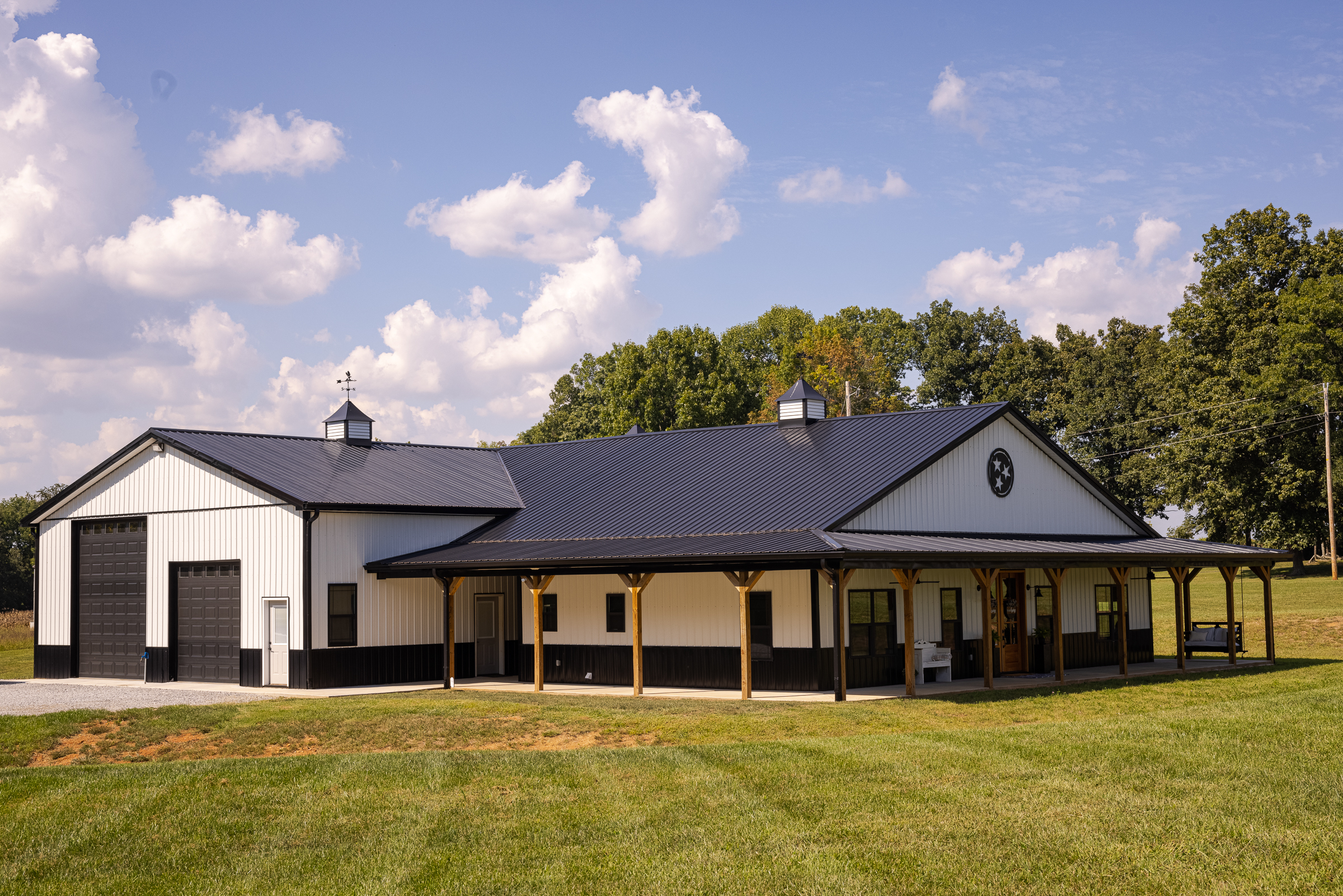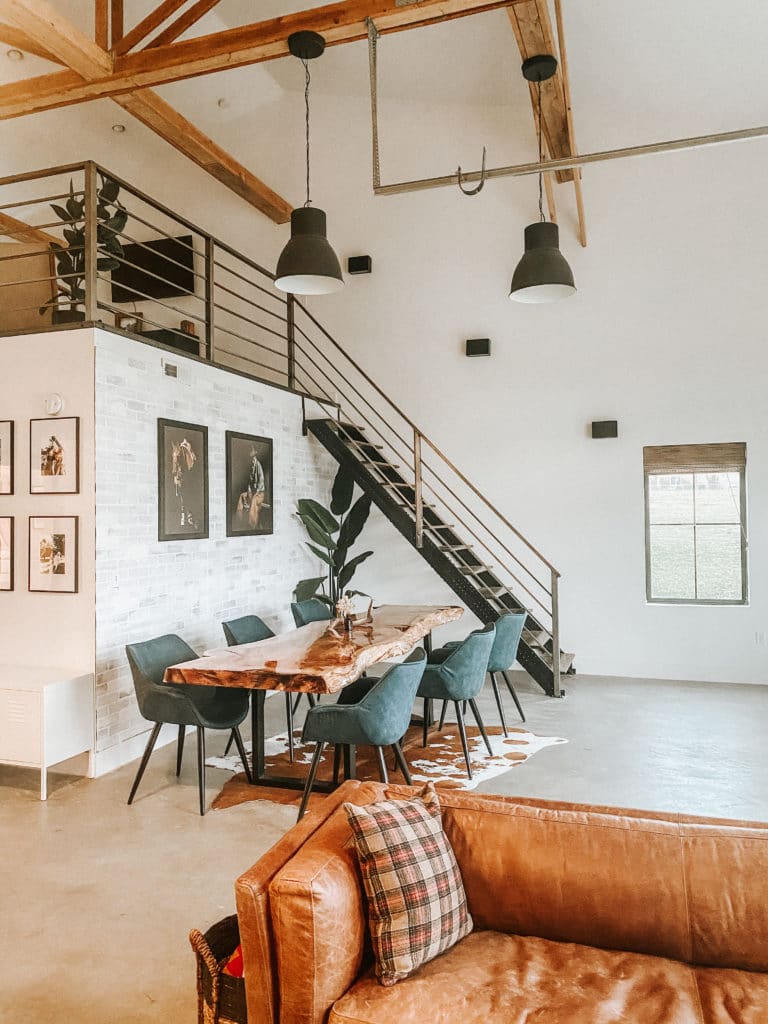Barndominiums Vs. Conventional Residences: a Thorough Comparison of Way Of Life and Performance
The decision between barndominiums and traditional homes encompasses numerous elements, including way of living preferences and functional requirements. Barndominiums are defined by their open designs and flexibility, usually appealing to those that prioritize public living and adaptability.
Review of Barndominiums
Barndominiums, a novel real estate pattern gaining appeal across various areas, mix the rustic charm of barn-style design with the functionality of modern home. These distinct frameworks typically include a steel or timber structure, incorporating open layout and high ceilings with energy-efficient functions. Frequently situated on extensive country residential properties, barndominiums supply house owners the opportunity to delight in a serene way of living while giving adequate area for various tasks.
The versatility of barndominiums prolongs beyond their visual allure; they can offer as both living quarters and functional areas for hobbies, workshops, or even local business. Their adaptive style permits very easy personalization, fitting diverse household demands and preferences. Many proprietors appreciate the low maintenance demands connected with steel exterior siding and roofing, adding to long-term longevity.

Attributes of Standard Houses
Stressing timeless style and convenience, conventional homes are identified by their distinct architectural styles, which typically show historical influences and regional visual appeals. Common attributes consist of in proportion exteriors, gabled roofs, and an emphasis on workmanship, resulting in a cozy and inviting ambience.
Standard homes often integrate elements such as crown molding, wainscoting, and wood flooring, boosting their classic charm. They generally include several rooms with defined functions, promoting family members interaction while enabling for privacy. see website. The design usually consists of official living and eating areas, which are favorable to amusing guests and hosting family events
Exterior products such as brick, wood, or stone are often made use of, contributing to sturdiness and a feeling of permanence. Barndominium builder. Additionally, several standard homes are designed with front verandas or stoops, cultivating a feeling of area and link with the neighborhood
Landscape design plays a substantial duty in conventional home design, with well-maintained gardens and paths that enhance visual allure - website. Overall, traditional homes symbolize a feeling of fond memories and stability, appealing to those that value heritage and a much more structured living atmosphere
Price Contrast
Normally, a price contrast between barndominiums and traditional homes exposes significant distinctions in building costs and general investment. Barndominiums, commonly built from metal or steel frames, normally incur lower product and labor costs than standard homes built from timber and block. The streamlined layout of barndominiums can convert to minimized building and construction times, further lowering labor prices and speeding up occupancy.
Generally, the expense per square foot for a barndominium varies from $100 to $150, while traditional homes can vary widely, normally falling between $150 and $300 per square foot, relying on location, materials, and design intricacy. This price variation makes barndominiums an eye-catching alternative for budget-conscious buyers looking for bigger living areas without compromising quality.
Furthermore, barndominiums may result in long-lasting cost savings via reduced upkeep costs, power efficiency, and insurance prices. Their durable building and construction materials commonly need less upkeep gradually contrasted to traditional homes. It is necessary to consider that while preliminary prices may be lower for barndominiums, the last investment will certainly additionally depend on specific personalization and preferred amenities, which can influence the total expenditure in both real estate kinds.
Way Of Life and Room Considerations
When thinking about way of living and area, barndominiums supply a distinct adaptability that interest a variety of home owners. These hybrid frameworks incorporate residential dealing with practical area, often including open layout that can be adapted to fit private needs. This versatility is especially beneficial for households or people looking for a customized living setting, enabling varied uses such as office, workshops, or recreational areas.

Furthermore, the aesthetic charm of barndominiums can deal with both rustic and contemporary preferences, making them a flexible option for numerous design preferences (Barndominium repair). Eventually, the option between a barndominium and a typical home frequently pivots on just how well each alternative aligns with the property owner's way of life desires and spatial requirements, highlighting the relevance of considering individual concerns in the decision-making process
Environmental Impact and Sustainability
The environmental impact and sustainability of barndominiums present compelling advantages contrasted to traditional homes. Primarily constructed from steel and other durable products, barndominiums are commonly built making use of recycled sources, decreasing the demand for brand-new materials and decreasing waste. Their layout normally emphasizes open spaces, which can bring about lower energy intake for cooling and heating contrasted to standard homes with even more segmented formats.
Furthermore, barndominiums can integrate lasting features such as photovoltaic panels, rainwater harvesting systems, and advanced insulation methods, boosting their energy effectiveness. The versatility of their style allows home owners to incorporate these innovations extra seamlessly than in numerous typical homes, which may require comprehensive retrofitting.
Furthermore, barndominiums typically require less resources for building and construction because of their visit their website easier, much more efficient styles. This not just lowers the carbon impact connected with structure yet additionally adds to a much more sustainable lifestyle. In contrast, typical homes may include greater levels of energy expenditure and source use throughout their lifecycle, from building and construction to maintenance. On the whole, barndominiums represent a forward-thinking approach to sustainable living, lining up with contemporary ecological top priorities.
Verdict
In recap, the option between barndominiums and typical homes depends upon individual way of living choices and functional needs. Barndominiums, with their open layouts and lasting materials, deal with those looking for adaptability and common living. Conversely, typical homes use specified rooms that enhance privacy and copyright historical appearances. Each option provides distinct advantages, demanding careful factor to consider of one's values and requires when identifying one of the most suitable living atmosphere.